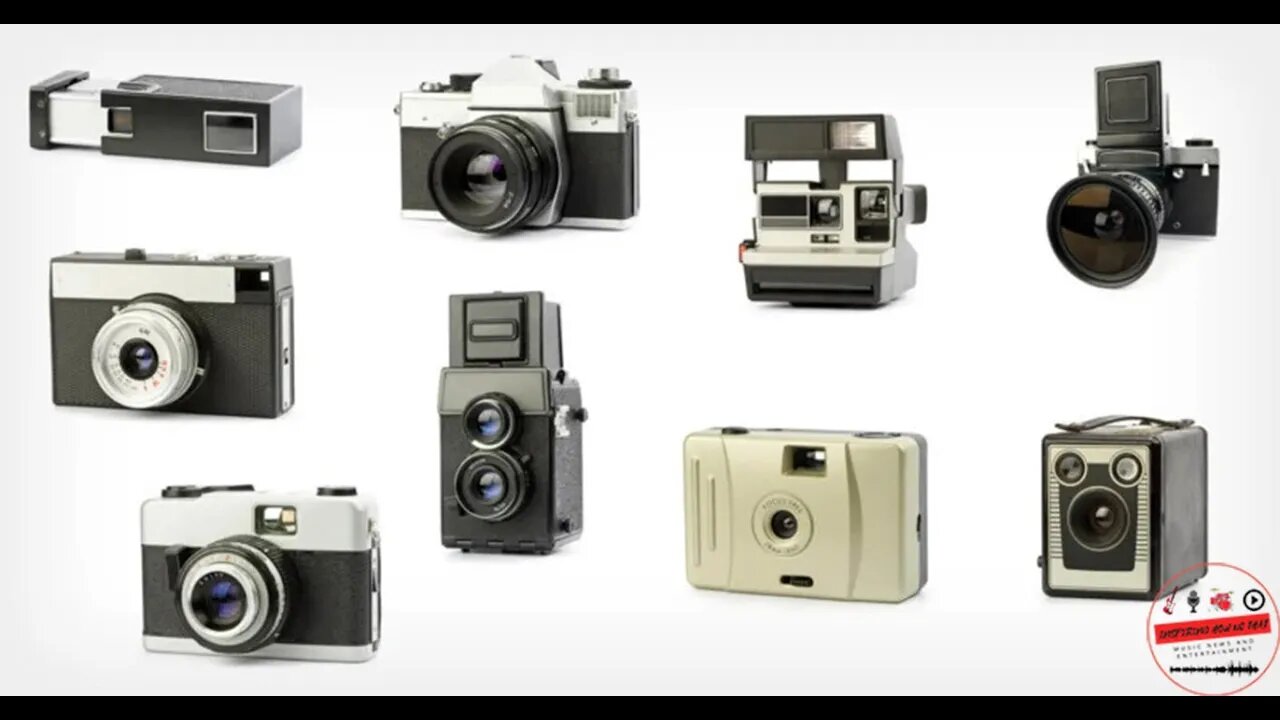Premium Only Content

Cameras - Trivia Video. ALL About Cameras Since the 1800's. Test Your Knowledge
We're back with a brand new trivia video, and we focus on Cameras! You guys know how this goes, leave your answers in the comments section below.
1. In 1885, George Eastman began manufacturing photographic film. What was the name of his first camera?
2. What company developed the first digital movie camera?
3. In 2022, what was the best selling digital camera?
4. What camera do you like using?
We hope you have fun with this video! Let us know what you think! If you have ideas for a fun trivia game, let us know!
Also, don’t forget to check out Inspiring How UC That on our other platforms:
Website Links: https://ihuct.org/
Youtube: https://www.youtube.com/@InspiringHowUCThat
Facebook: https://www.facebook.com/inspiringhowUCthat
Instagram: https://www.instagram.com/inspiringhowucthat/
Twitter: https://twitter.com/IHUCT
Tiktok: https://www.tiktok.com/@ihuct
Rumble: https://rumble.com/user/IHUCT
E-mail: inspiringhowucthat@gmail.com
#cameras #Trivia #InspiringHowUCThat #Brian #fungame #playalong #triviagame #fyp
*Copyright Disclaimer Under Section 107 of the Copyright Act 1976, allowance is made for "fair use" for purposes such as criticism, comment, news reporting, teaching, scholarship, and research. Fair use is a use permitted by copyright statute that might otherwise be infringing. Non-profit, educational or personal use tips the balance in favor of fair use. No copyright infringement intended. ALL RIGHTS BELONG TO THEIR RESPECTIVE OWNERS*
Biographical information on cameras from Wikipedia (https://en.wikipedia.org/wiki/Camera):
A camera is an optical instrument used to capture and store images and videos, either digitally via an electronic image sensor, or chemically via a light-sensitive material such as photographic film. As a pivotal technology in the fields of photography and videography, cameras have played a significant role in the progression of visual arts, media, entertainment, surveillance, and scientific research. The invention of the camera dates back to the 19th century and has since evolved with advancements in technology, leading to a vast array of types and models in the 21st century.
Cameras function through a combination of various mechanical components and principles. These include exposure control, which regulates the amount of light reaching the sensor or film; the lens, which focuses the light; the viewfinder, which allows the user to preview the scene; and the film or sensor, which captures the image.
Several types of cameras exist, each suited to specific uses and offering unique capabilities. Single-lens reflex (SLR) cameras provide real-time, exact imaging through the lens. Large-format and medium-format cameras offer higher image resolution and are often used in professional and artistic photography. Compact cameras, known for their portability and simplicity, are popular in consumer photography. Rangefinder cameras, with separate viewing and imaging systems, were historically widely used in photojournalism. Motion picture cameras are specialized for filming cinematic content, while digital cameras, which became prevalent in the late 20th and early 21st century, use electronic sensors to capture and store images.
The rapid development of smartphone camera technology in the 21st century has blurred the lines between dedicated cameras and multifunctional devices, profoundly influencing how society creates, shares, and consumes visual content.
History
Main article: History of the camera
19th century
Beginning with the use of the camera obscura and transitioning to complex photographic cameras, the evolution of the technology in the 19th century was driven by pioneers like Thomas Wedgwood, Nicéphore Niépce, and Henry Talbot. First using the camera obscura for chemical experiments, they ultimately created cameras specifically for chemical photography, and later reduced the camera's size and optimized lens configurations.
The introduction of the daguerreotype process in 1839 facilitated commercial camera manufacturing, with various producers contributing diverse designs. As camera manufacturing became a specialized trade in the 1850s, designs and sizes were standardized.
The latter half of the century witnessed the advent of dry plates and roll-film, prompting a shift towards smaller and more cost-effective cameras, epitomized by the original Kodak camera, first produced in 1888. This period also saw significant advancements in lens technology and the emergence of color photography, leading to a surge in camera ownership.
-
 1:02:54
1:02:54
Glenn Greenwald
22 hours agoSouth Korean Economist Ha-Joon Chang on the Economic World Order, Trump's Tariffs, China & More | SYSTEM UPDATE #410
29.3K19 -
 1:02:27
1:02:27
Donald Trump Jr.
6 hours agoBye Mitch, plus Kash confirmed, Interview with AJ Rice | Triggered Ep.218
81.8K57 -
 LIVE
LIVE
The StoneZONE with Roger Stone
52 minutes agoRoger Stone Hails Confirmation of Kash Patel, Trashes Schiff for Attacks On Patel | The StoneZONE
1,336 watching -
 LIVE
LIVE
The Amber May Show
8 hours agoWomen Of Rumble 02-20-25
210 watching -
 41:18
41:18
Kimberly Guilfoyle
6 hours agoToday, We Kash in on Equal Justice, Live with Ryan Walters & Daniel Turner | Ep.198
66.2K20 -
 1:36:50
1:36:50
Redacted News
5 hours agoThe TRUTH in Ukraine has been EXPOSED by Trump and they are melting down | Redacted w Clayton Morris
104K158 -
 2:05:35
2:05:35
The White House
6 hours agoPresident Trump Hosts a Reception Honoring Black History Month
64.7K43 -
 1:05:09
1:05:09
Josh Pate's College Football Show
6 hours ago $0.40 earnedCFP Expansion: Latest Intel | CFB’s Schedule Problem | Arch Manning Hype | ACC Program Rankings
15.6K2 -
 55:52
55:52
LFA TV
1 day agoTrump vs. Europe | TRUMPET DAILY 2.20.25 7PM
21K3 -
 31:02
31:02
Chrissy Clark
3 hours agoAn IVF Nightmare, Trump’s Illegal Immigration Crackdown, & Biden’s Student Loan Plan BLOCKED I URS
14.1K8